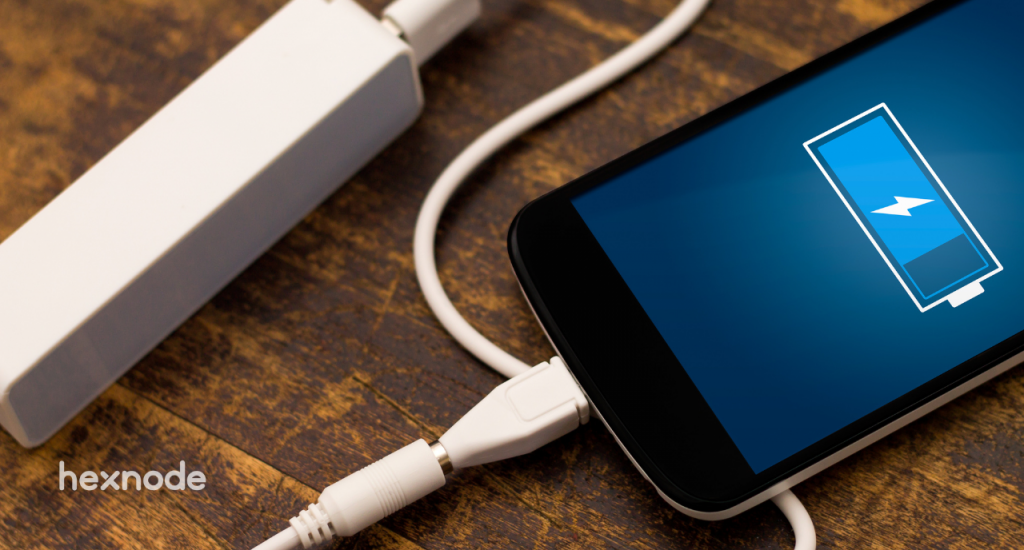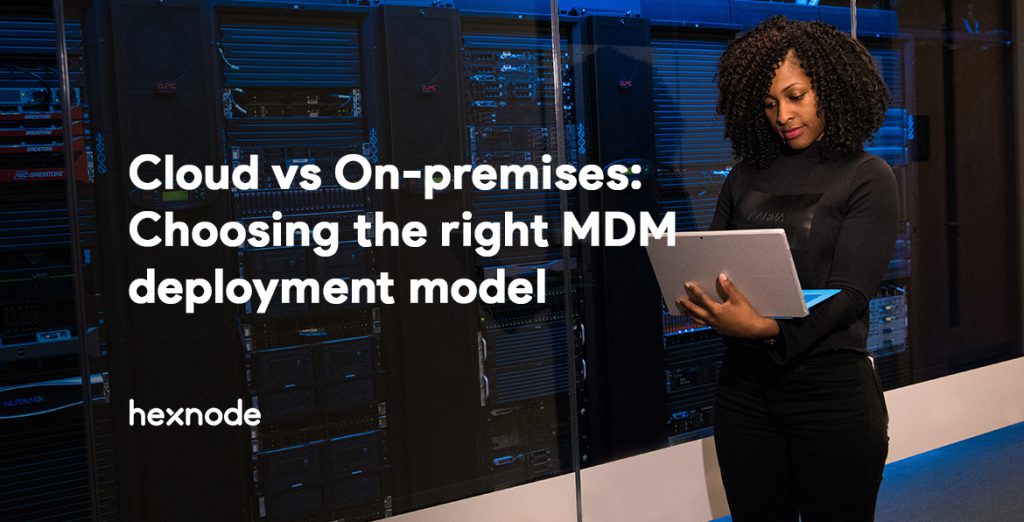DaaS, or Device-as-a-Service, is the outsourcing of hardware units such as desktops, laptops, smartphones, or tablets with preconfigured software or services. You may think that DaaS really sounds similar to hardware leasing, but it is not. In traditional hardware leasing, the leased devices are managed in-house, by the IT admins or managers in the organization. In contrast, Device-as-a-Service leases devices that are already managed by the hardware provider or a managed service provider. It is a really attractive option for businesses, as it does away with the time and effort to buy, setup, and manage devices for your business. DaaS was one of the most trending services in 2020, the year that brought about a big change in all of our lives.
The COVID-19 pandemic definitely served as a catalyst for growth in digital technology, as all the businesses strived to provide their services online. It sounds all well and good if it weren’t for the fact that the cybersecurity attacks in 2020 were the highest ever yet. It makes a perverse sort of sense. The spread of digital technology also means more cyberattacks. Organizations have to do everything they can to secure their work environment, be it the trendy remote work or the good old work from office.
Why Device-as-a-Service (DaaS)?

While DaaS has been around for a while now, it rocketed to popularity only in 2020. Now all the major PC manufacturers like Apple, Microsoft, Dell, and HP offer DaaS. According to a report from Accenture, 65 percent of the PC manufacturers offered DaaS capabilities in 2019, compared to a shocking 0 percent in 2015. The work-from-home scenario definitely played a major role in boosting DaaS. Device-as-a-Service is an excellent business model for small and mid-size businesses, especially those on a budget. It could even be adopted by larger enterprises if it suits their business needs. As for the benefits DaaS offers, let us take a brief look:
Reduced costs for customers and higher ROI for vendors
Rather than just buying the work devices rigidly, Device-as-a-service or DaaS is a consumption-based model that allows you to buy just the devices you need, just for the time you require them. The cost for deployment, hardware and repair costs, all are highly reduced. The time that the IT administrators spend on the devices is brought down as well since the devices come pre-configured with the services and configurations. Combining the hardware and software services under one umbrella reduces the financial overhead for the business. Additionally, using DaaS instead of buying hardware traditionally converts the capital costs into operational expenses, which potentially decreases the total cost of ownership (TCO).
How does DaaS benefit the vendors? The customers use the devices for a specific period of time until their subscription ends. The DaaS providers can then refurbish and resell these devices to new users. The vendors can repeat this process for as long as the devices are useful, maximizing the return on investment (ROI).
Flexible and scalable

DaaS model allows multiple device models, operating systems and configurations, leading to a very flexible device management scenario. For growing businesses, the requirements keep changing, and the DaaS model caters to those changing needs. Organizations can increase or decrease the number of devices as they wish since it is as simple as taking up or canceling a subscription. It is also simpler for the organizations to perform device refreshes – upgrading the older devices with newer ones and stay updated with the latest technology with minimal cost.
Custom configurations
The best part of Device-as-a-Service is not the device, but the services that come with it. The customer puts forth the requirements to the DaaS provider, and then it is the responsibility of the vendor to provide the device configured with all the custom settings and software. The job of the IT manager is made infinitely easier, as the device procurement and its lifecycle management are mostly taken care of by the vendor themselves.
Improved cybersecurity

Increased employee productivity
The software and devices used at work impact employee productivity directly. How likely are you to quit your job if you are not comfortable with the technology your company uses? According to a G2 report in 2019, 24 percent of employees were more likely to quit their job because of dissatisfaction over the technology used. Businesses using DaaS find it easier to overcome this challenge, with the custom configurations and service support helping in increasing the general employee productivity in the organization.
Taking a walk through the DaaS lifecycle
1. Planning
All decisions require planning, and more so when it involves the technological core of your business. The very first thing that you need to do is to identify your business requirements. Compare your current device environment, if any, to the one you actually want. Make a checklist including but limited to the operating system preferred, applications needed, device configurations and settings required, and so on. Research the different DaaS providers and the services they include.
2. Procuring the devices
The second step in the DaaS lifecycle is to actually procure the devices from a DaaS vendor. After doing adequate research, choose the DaaS vendor most suited to your business needs, and place the order for the devices. The DaaS vendor would then provide the devices with all the pre-configured settings as specified by the customer.
3. Enrolling the devices with a UEM
The number of devices used in an average organization is no joke. Combining the device management capabilities of a UEM with DaaS would help you manage, monitor and secure the endpoints with minimal time and effort.
4. Deploying the enrolled devices
The devices have been configured and enrolled. What next? Deploy these manage-ready devices to the target end-users so that they can start working without delay.
5. Monitoring the DaaS endpoints
Be updated on the deployed device status with regular monitoring and report analysis. Usually, the DaaS vendors help their customers in effectively managing the leased hardware assets.
6. Device refreshing
Whether it be device software or hardware, both keep updating by the minute in our technologically-driven world. Keeping up with the changing times would be expensive if you go for the traditional method of buying the devices. With DaaS, device refreshing is easier at a fraction of the actual device cost. Change the older device fleet for a newer one when the business needs demand it.
How does a UEM make the service in Device-as-a-Service (DaaS) better?

A Unified Endpoint Management solution used in conjunction with DaaS greatly amplifies the whole device management and cybersecurity experience. What all can you do with Hexnode UEM?
- A single interface to manage all the devices – All devices can be monitored and managed from the Hexnode web console after logging into your Hexnode account. If you have no time to individually monitor the devices, just take a look at the informative dashboard, and you are done.
- Configuration management – The DaaS vendor may not fulfill all your configuration requirements. Use UEM to bridge the gap between your requirements and implementation.
- OS and software updates management – Deploy and enforce OS and software updates in the managed devices and keep the devices updated with all the security fixes.
- Security Management – Configure specially designed security policies for your enterprise and assign these policies to the UEM enrolled devices.
- App Management – Add, remove, or update the applications in the managed endpoints. The admin can also blacklist/whitelist the applications as needed.
- Kiosk Management – Explore a whole range of new possibilities with Hexnode’s Kiosk Mode. Lock down your devices into a set of required apps, or convert them into a single-purpose device by using Single App Mode. You can even use these devices as digital signage displays and display video/image advertisements.
- Factory Reset Protection – FRP is a security feature in Android that prevents misuse of the device even if it gets reset to factory settings. The user would be asked to login with the Google account in the device during the setup after the factory reset. Hexnode lets you restrict the users from modifying the accounts or users in the device. This gives an added security to the deployed devices.
- Blocking factory reset – For Android devices enrolled as device-owner with Android Enterprise and Samsung Knox devices, Hexnode allows the admins to block the factory reset of the device.
- Broadcast messages – Sometimes, you may need to pass an important message directly to all the deployed devices. Do it with Hexnode’s broadcast messaging feature.
- Non-removable MDM profile – All the restrictions and configurations would make no sense if the users can remove the management profile. Hexnode provides the option to make the management profile non-removable.
- Remote wipe/remote lock – Lost devices are a pain, whether it be DaaS or otherwise. Remotely lock or wipe the lost devices with Hexnode UEM. You can also wipe the devices that have expired subscriptions.
Get started with Unified Endpoint Management by signing up for a 14 day Free trial with Hexnode DaaS with Hexnode UEM
Device-as-a-Service for remote operations
Flexible technological services like DaaS are very attractive, especially when it is customizable to boot. The Covid-19 pandemic enforced the need for the enterprises to move on to an infrastructure model that accommodates all employees and teams – remote or otherwise. We can look forward to widespread DaaS adoption in the near future, as it is proving to be an excellent model for remote work.






